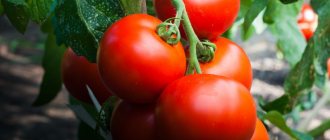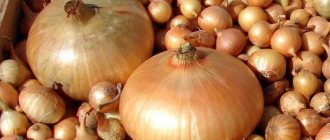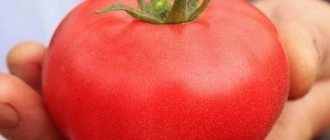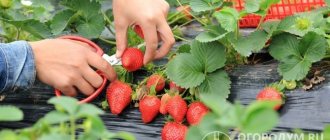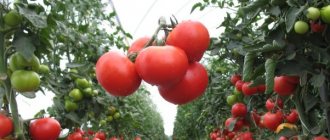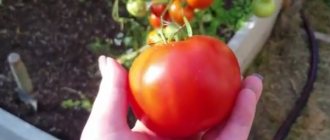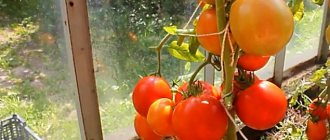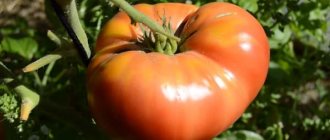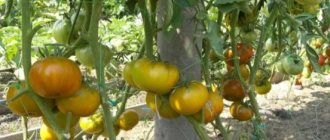An early-ripening onion variety, “Stuttgarter Riesen,” was bred by German breeders (Germany). Included in the State Registers of Russia (in 1995) and Belarus (in 1991). It belongs to the spicy type and is considered universal: both green feathers and juicy onions are used for food, which are perfect for fresh consumption, all processing options and long-term storage.
Gardeners grow onions “Stuttgarter Riesen” using all traditional methods: sowing seeds, through seedlings or planting sets
The variety is well adapted to various soil and climatic conditions, approved for cultivation throughout Belarus, and in Russia it is recommended primarily for the Central, Volga-Vyatka, Middle Volga and East Siberian regions. Designed for cultivation on subsidiary plots and commercial production in large farms, as it is suitable for mechanized harvesting.
This type of crop is characterized by high yield, versatility of purpose, suitability for long-term storage, and therefore is very popular in many countries. In addition, cultivating the variety allows you to get the first juicy greens long before seasonal products go on sale. Summer residents of eastern Siberia and central Russia grow a full-fledged crop of “Stuttgarter Riesen” onions from sets or through seedlings, avoiding damage to plants by late blight (end rot), the height of which can be expected in these regions already in early August.
Description and characteristics of the variety
The Stuttgarter Risen onion was bred in Germany and entered into the register of breeding achievements in 1995.
- Early ripening variety. When growing seedlings, ripe bulbs are harvested 90-120 days after the seeds germinate. From the germination of the seed to the full ripening of the fruit, 65-75 days pass.
- It is grown as an annual and biennial crop.
- About 5-8 kg of onions grow on every square meter of plot.
- Low maintenance.
- It can be stored for a long time in a cellar or pantry.
- It is not afraid of frost, so it can be planted early.
- Has increased immunity to diseases and pests.
- Not susceptible to downy mildew. Does not require treatment with special preparations.
- May be affected by onion moths. Its larvae penetrate the fruit and infect the bulb. She begins to rot and die. At the first signs, the affected plant must be removed from the garden bed.
Rot may also appear as a result of waterlogging. To avoid this, the following measures must be taken:
- Before planting, the sets are soaked in a saline solution or a weak solution of potassium permanganate.
- Carrots or dill are planted next to the onions.
- Carry out regular loosening of the soil.
- In autumn, onion plantings are mulched.
Reviews from gardeners
Irina Topunova: I have been using the Stuttgarter variety for a long time and have never regretted it. I heard a lot that he is very unpretentious. And I agree with this. The only thing I especially advise is not to disdain feeding. I make them 2 times a year. It doesn’t seem like much, but the harvest is getting significantly larger.
Irina Krivosheyko : I can’t say that I experimented a lot with onion varieties. It would be more correct to say that Stuttgrater Riesen began to plant almost immediately. What suits me is the real possibility of planting and forgetting. You don't have to feed it, just water it. And even then, the onion will easily survive care in the format when necessary. For example, I manage to raise him at the dacha, where we only come on weekends. The onion itself has a regular, classic taste. Easily grown for both bulbs and feathers.
Antonina Skripenko : I like that it is possible to grow this onion in the Vologda region for both the bulb and the feather. The taste is excellent, rich, adds flavor to dishes. Even here in the north, the yield is encouraging. You can collect a good box like this from a couple of three beds.
Features of cultivation
Stuttgarter Riesen onions can be grown from seeds (nigella) and from sets. You can also plant in spring or before winter.
To plant onions, it is recommended to choose sunny areas with fertile soil. This crop cannot be planted in the same place for 3 years.
The soil is well fertilized. To do this, while digging up the site, mineral fertilizers (superphosphate 2 tablespoons per 1 sq. m) and organic matter (chicken droppings, humus) are added.
Planting before winter
Before planting before winter, the seed material is well sorted and processed.
All spoiled, rotten and broken bulbs are removed, leaving only healthy samples. Then they are left near the stove or radiator to warm up for 8 hours at a temperature of + 42 °C.
Many vegetable growers disinfect planting material in a weak solution of potassium permanganate or copper sulfate for 10 minutes. Then the bulbs are dried for 24 hours.
Important! It is easier for dry bulbs to withstand a sharp cold snap than for swollen bulbs.
These procedures speed up germination.
For planting, make long furrows, leaving a distance of 25 cm between them. The bulbs are placed in them, spaced 10 cm apart from each other. Water moderately.
Growing from seeds
In the central and southern regions of Russia, from April 15, onions from seeds are grown in the following way:
- The seeds are soaked and dried.
- The nigella is buried 1-1.5 cm, leaving 20-30 cm between rows.
- Next, the beds will be mulched to prevent a crust from appearing through which young shoots will not be able to break through.
- When 2 true leaves appear, the seedlings are thinned out so that there is at least 2 cm between them.
- After the formation of 4 leaves, a second thinning is carried out, leaving 5-6 cm between the sprouts.
- Next, organic matter or chemicals are added as fertilizer.
- Ripe onions can be harvested 120 days after planting.
Growing through seeding
An early harvest can be obtained through sowing. This process is more expensive, since sowing costs much more than nigella.
However, the harvest can be harvested 60-70 days after planting.
- The seeds are sorted and disinfected in a weak solution of potassium permanganate or saline solution (1 tablespoon of salt is diluted in 3 liters of water). The seeds are kept in the solution for 5-10 minutes, and then listened to for 24 hours.
- Stuttgarter Risen onion sets are planted in the beds in the spring, leaving a distance of 10-13 cm from each other. Leave 25-30 cm between rows.
- The smallest bulbs are planted in early spring, after the ground has thawed.
Forcing on a feather
The variety is not very suitable for forcing into feathers, however, for home use, larger bulbs can be planted on greenery in separate beds.
Top dressing
Even if the soil on the site was well fertilized in the fall, during the growing season the plants need a lot of nutrients, so it is recommended to fertilize.
The first fertilizing with nitrogen fertilizers is applied 2-3 weeks after germination. Potassium nitrate, mullein solution or bird droppings are also used.
The second feeding is carried out with complex fertilizers, alternating the proposed compositions. For 10 liters of water add:
- 2 tbsp. spoons of nitroammophoska;
- 1 tbsp. a spoonful of nitrate, potassium sulfate and superphosphate;
- 1 tbsp. a spoonful of ammophosphate and potassium sulfate;
- manure and ash.
The third fertilizing is applied when the bulbs begin to form. Then phosphorus-potassium preparations are used. You can add a mixture of superphosphate, potassium sulfate or monopotassium phosphate.
Harvesting and storage
Stuttgarter risen onions are harvested in July–August. 10-14 days before this, stop watering. Onions are dug out from the garden after the tops lie down and become pale, and a thin yellow-brown husk appears on the heads. In good weather conditions, the onions are left to ripen directly on the ground, after which they are trimmed. The main thing is that a neck of about 5 cm remains. The harvest is put into boxes and sent for storage.
Damaged bows should be used initially. The rest of the crop is stored in a dry place. He doesn't need any special conditions.
Cultivation care
Despite the low maintenance requirements of onions, to achieve a good result you need to take care of the plants.
Onion beds need to be weeded and loosened regularly so that the plants have enough light and air to develop.
Plants need to be watered regularly. Do not allow the soil to dry out for a long time - this can negatively affect the taste of onion heads and feathers. With a lack of moisture, plants have an unhealthy appearance, the pulp and greens become hard and excessively bitter.
Often, signs of a depressed plant state appear due to a lack of certain microelements:
- lack of nitrogen: the feather turns pale, takes on an unhealthy appearance, and becomes flabby;
- lack of potassium: the plant gradually fades and becomes soft;
- lack of phosphorus: the onion darkens and dries, starting from the tip of the leaf, and gradually dries out completely.
To feed ripening vegetables, a traditional complex of fertilizers, both organic and chemical, is used:
- Before planting, it is advisable to add rotted cow manure and bird droppings to the soil. At the same time, it is necessary to ensure that the organic matter is not fresh and does not have signs of infection by parasitic insects.
- 14-6 days after the appearance of the first shoots, nitrogen fertilizer is applied to the soil for better development of green mass.
- After 30 days, the time comes for the second feeding. Plants are fertilized with a nitrogen-phosphorus preparation with the addition of potassium.
- At the stage of the beginning of the formation of heads, you can add a potassium-phosphorus mixture to the soil in the beds.
- After harvesting, it is advisable to sow the area with green manure to restore the fertile layer.
Fighting onion fly
Despite the fact that the Stuttgarter Riesen onion is not susceptible to most diseases, it is not able to resist the onion fly. This insect lays eggs in onion beds; the hatched larvae infect the pulp of the bulb, which leads to rotting and death of the plant. Wormy bulbs are not suitable for consumption.
The fight against this pest begins with preventing its occurrence:
- planting onions next to carrots - the smell of carrots repels the onion fly;
- compliance with crop rotation - it is not recommended to plant onions in the same place for several years in a row;
- mulching the beds - a fly will not be able to lay eggs in such soil;
- processing the bulbs before planting - soaking in a solution of potassium permanganate and salt;
- Autumn digging of the soil guarantees freezing of the larvae in the winter.
Breeding ways to solve problems
Specialists from the Netherlands (agricultural breeders) have developed an improved version - the non-hybrid variety Stuttgarter-Stanfield (Stanfield), zoned in Russia since 2015 (based on the results of tests in the Central region). It is devoid of many of the disadvantages of the original form, maintaining good performance in terms of yield and bulb size.
Varietal characteristics of Stuttgarter-Stanfield onions:
- three-germ, which means a lush feather;
- thin “neck”;
- resistance to fungal infections;
- completion rate for harvesting – 88%, when ripening – almost 100%;
- the shape is less flat, closer to an ellipse;
- average bulb weight 85-100 g;
- industrial productivity of turnips is from 180 to 380 kg per hundred square meters.
Stuttgarter-Stanfield grows bulbs later (in the middle terms), so it is not a complete replacement for the original early variety. Future tests will show whether the new product will be able to displace the maternal form. The stable genetics of “old”, reliable varieties are not always ready to give up ground even in front of disease-resistant new forms.
How is it stored?
After drying, the vegetables must be sorted. Rotten or damaged specimens are set aside. Those suitable for consumption must be cleaned and recycled.
Dry onions are stored in braids, in wooden or plastic well-ventilated containers. The room should be cool with moderate humidity levels.
Periodically it is necessary to carry out inspections and separate diseased vegetables.
Stuttgarter Riesen can be called a universal variety. High yield, excellent taste and ease of care ensure its popularity. This variety is very popular among gardeners.
Harvesting
Onions ripen in autumn. Before the start of the rainy season, it is necessary to collect:
- At the end of July I stop watering and let the bulbs ripen and the green part dry out. The signal for cleaning will be a yellowed, feathered feather.
- Cleaning is carried out on a warm sunny day. Carefully dig out the onion with a pitchfork. Lightly shake off the soil and lay it out in a ventilated place, protected from water. The better the air circulates, the faster the drying.
- When collecting, you need to put aside damaged and immature specimens with a wet root collar. They don't last long. They are sent for processing first.
Do not tap the soil on the ground. The turnips will become damaged and begin to rot during storage.
Useful tips
Some general tips for growing onions:
- Avoid acidic and clayey soils - the crop is not able to grow on them.
- After treating seed with potassium permanganate, always dry it. Also, trim off the tops of the sets.
- Fertilize the plants three times during the growing season.
- Only rotted manure should be used. Potassium chloride should be applied only in the fall.
- It is best to harvest in late July before the start of the rainy season.
- While storing the crop, periodically sort through it, selecting spoiled bulbs. The appearance of one rotten onion very quickly provokes the development of putrefactive processes in the rest.
Did you know? The Romans believed that onions could increase the strength and courage of a warrior, so this vegetable was necessarily included in the menu of soldiers.
The Stuttgarter Riesen onion variety is perfect for growing in any climate zone. He is not afraid of cold; he also tolerates heat successfully. It is not demanding in care and even with insufficient attention it can produce a good harvest.
Answers to frequently asked questions
How to grow a variety - on a feather or on a bulb?
Both ways are acceptable. Optional.
What kind of bulbs should I put on the feather?
Those that are of worse quality. It is even recommended to plant them in a special way: densely next to each other. And for bulbs, create a larger distance between them when planting.
When is the time to harvest the bulbs?
When the feathers turn yellow, they begin to fall off and bend towards the ground.
How long does the variety grow?
Usually from 60 to 120 days depending on the planting method.
Rules for planting onions Stuttgarter Riesen
If you follow a certain planting algorithm, you can get a good harvest even from the smallest area:
- Stuttgarter onion seeds are soaked in warm water for a day. The water is changed periodically. This is done in order to remove excess essential oils from the seeds, which prevent rapid seed germination.
- After soaking, the seeds are lightly dried. This is done on a paper towel, napkins or toilet paper.
- For convenience, during planting, the seeds are powdered with chalk, but this is not necessary.
- The grooves are moisturized.
- Onions are planted densely, and after germination they are thinned out, leaving 5-7 cm between plants.
- Immediately after planting, watering is not carried out, as a crust may form, which will complicate germination. In very hot weather, drip watering of plantings is recommended.
- For the winter, the ridges are mulched with peat, dry grass or fallen leaves.
The beds must be cleared of weeds in time and loosened for better ventilation of the onion rhizome. The depth of loosening is required to be small so as not to damage the young bulbs. The soil should not dry out, because this will affect not only the yield, but also the taste of the vegetable. When growing Stuttgarter Riesen onions, special care does not require large expenditures, both physical and material.
